Alla prima painting, or “wet-on-wet” as it is also known, is a technique of painting directly over a previous layer of paint before that layer has dried. It is most commonly practiced in oil painting because wet layers of oil paint can be worked into for quite some time before they dry. It can also be practiced in watercolors and even with some slower-drying acrylics. Alla prima is a very effective method for working en plein air (outdoor) landscape painting, as a painting can be completed in one sitting, as opposed to several days or weeks.
Meaning literally “at once” in Italian, alla prima painting has been around since the beginning of oil painting. While traditional oil painting involves allowing previous layers of paint to dry before applying new ones and can be quite time-consuming, alla prima developed as a way to complete a quick study or bring a certain expressiveness and fluidity to pieces. Alla prima painting also has the added benefit of allowing you to mix your paint directly on the canvas as well as on the palette. Because a wet layer of paint effects a new layer of paint very differently than a dry layer, some skill in understanding how the two layers will interact is required.
Among the earliest to take advantage of the qualities of alla prima painting were the Dutch, who put it into practice in the 15th century. Jan Van Eyck’s Arnolfini Wedding Portrait from 1434 is an example of a combination of traditional and wet-on-wet oil painting.
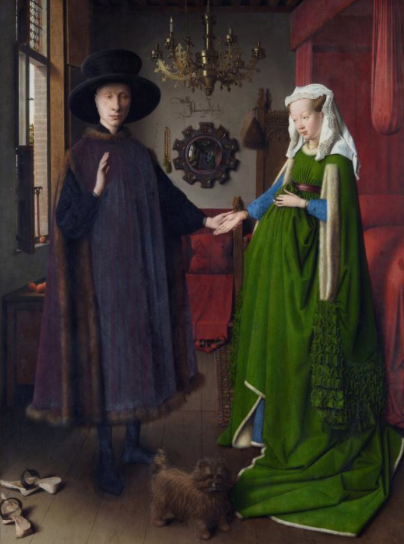
Later Dutch painters were able to apply paint even more loosely and expressively. Frans Hals’ Malle Babbe from 1633 shows just how painting alla prima can add energy and emotion to a painting.
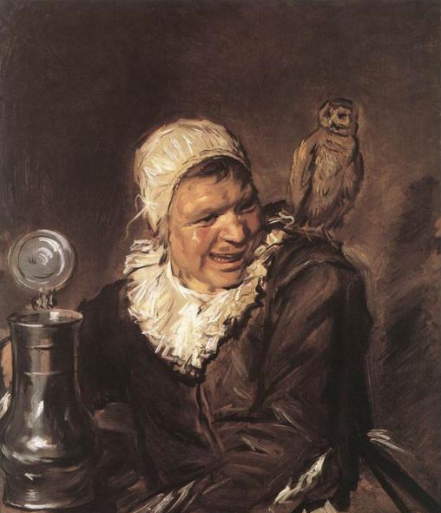
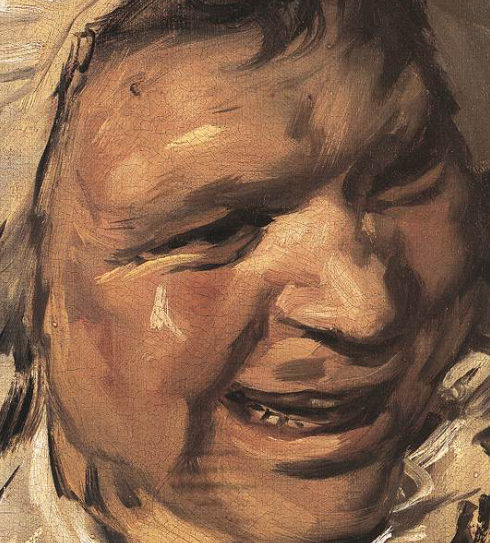
The effect is one of immediacy and spontaneity. You can also see Hals’ brushstrokes quite clearly. By showing evidence of the artist’s “hand,” Hals’ alla prima work predates the Impressionist movement by over 200 years.
Hals’ paintings and others paved the way for painters whose work sought to “economize” visual information into as few brushstrokes as possible. Painting alla prima became the best way for realists like John Singer Sargent and Post-impressionists like Paul Cezanne to capture the essence of the subject in a lively and direct way.
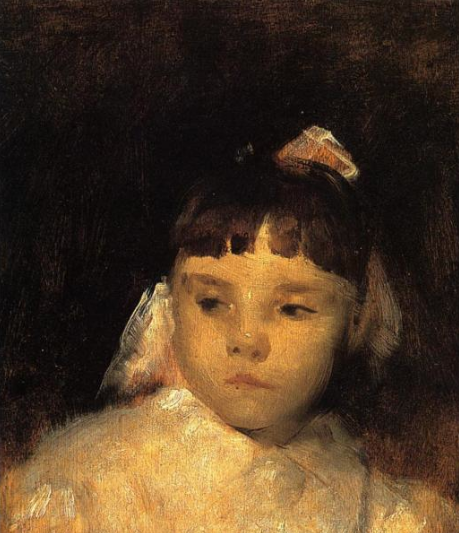
John Singer Sargent Violet Sargent 1875
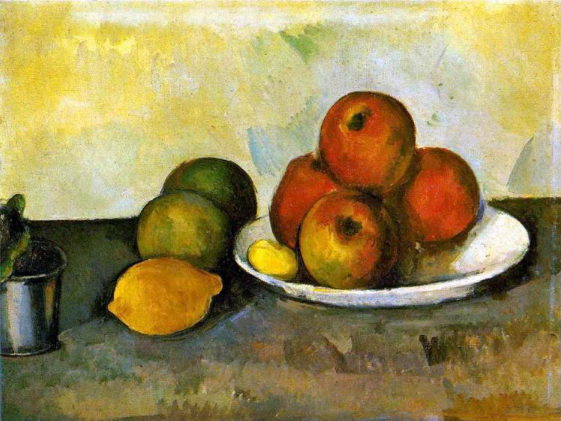
Paul Cezanne Still Life with Apples 1890
Soon afterward, alla prima painting became an end unto itself. The lyrical, almost dancing qualities possible in brushstrokes are on prominent display in Van Gogh’s most famous work.

Vincent Van Gogh Starry Night 1889
Paintings that are too large to be painted easily in one sitting can still employ alla prima painting in stages. Certain passages will be painted all in one go before the artist moves on to another area. In this large full-figure portrait I progressed one element at a time through the figure’s face, jacket, pants and background, each completed in separate sessions of alla prima painting.
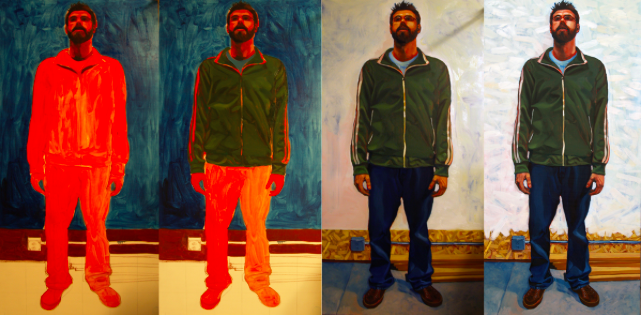
While the underpainting (the red area) was dry when I painted over it, the shadows and highlights of each of the components were painted wet-on-wet over a base color, such as the green of the jacket, as I progressed through the painting.
The fun of alla prima is the way the big picture emerges from these loose, gestural painting sessions. What appears chaotic and messy close up becomes clear from a distance. Colors blend and values organize themselves as the viewer gets farther away. I painted the hands below very quickly, remembering to step away every so often to evaluate how they were working in the big picture. At close range, they are very difficult to read:
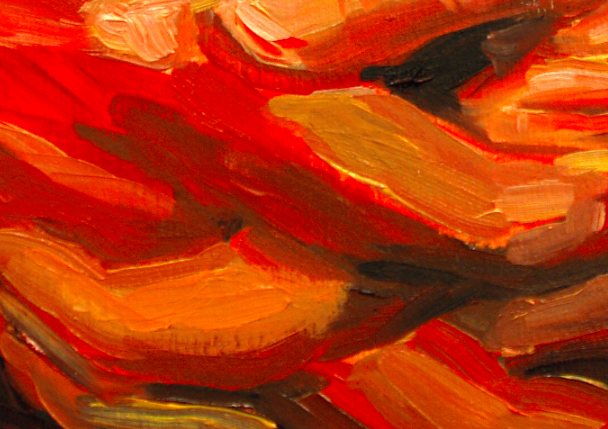
But as you step back, everything makes sense.
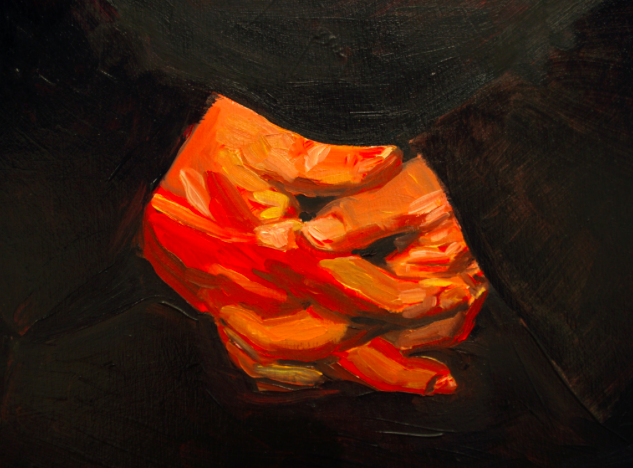
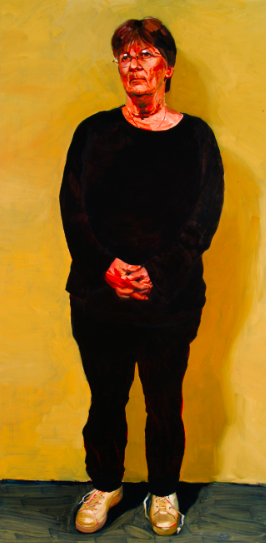
Are you ready to try alla prima painting?
You might also enjoy the history of portraiture, and these figure drawing tips. Be sure to visit the Bluprint blog on Monday for tips on sketching effective backgrounds.

Share tips, start a discussion or ask one of our experts or other students a question.
No Responses to “Alla Prima Oil Painting: Instant Gratification!”